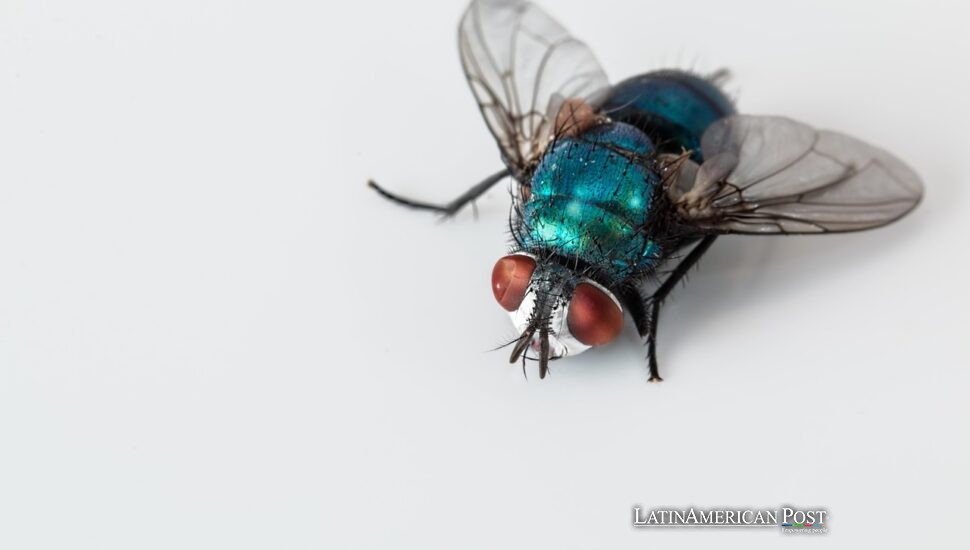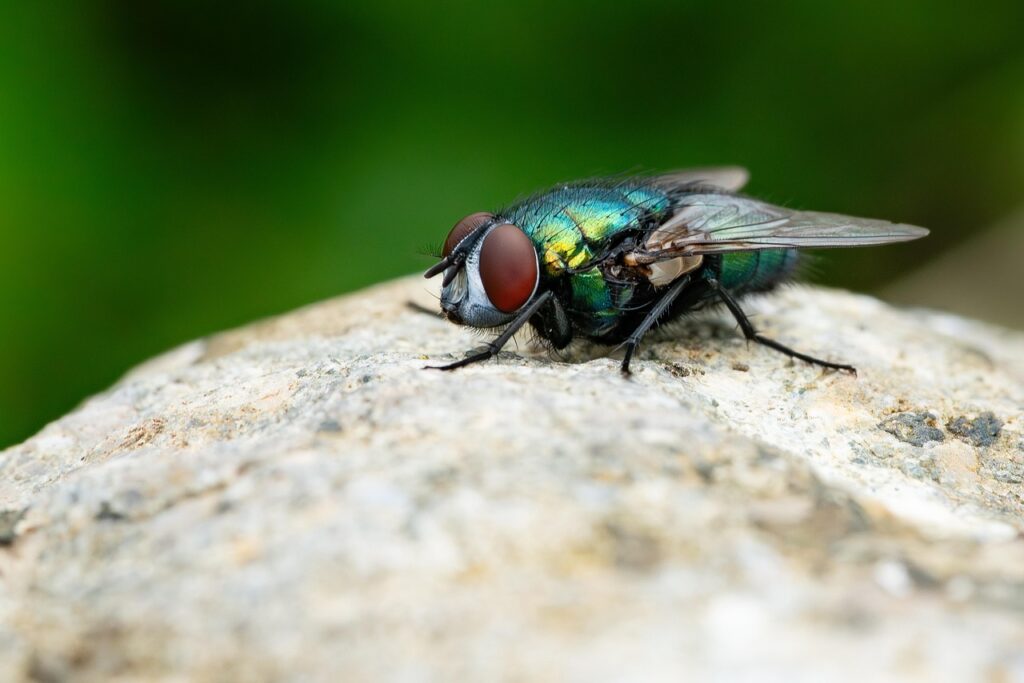Mexico Confronts a Flesh-Eating Screwworm Surge Threatening Livestock, People, and Borders

A parasite once thought banished has returned. The New World screwworm is back on the rise in Mexico, with infestations increasing by 53% in just four weeks. Cattle and pets are falling victim—and in rare but devastating cases, people too.
A parasite returns to the north.
The New World screwworm, Cochliomyia hominivorax, is again cutting its way through Mexico’s southern states. Official tallies show the number of infested animals rising sharply through mid-August, a jarring resurgence of a fly that the United States declared eradicated in 1966, and Mexico followed in 1991. Both countries had used the same method: unleashing swarms of sterile males to overwhelm reproduction and collapse the population.
The comeback began with the first newly reported Mexican case in November 2024. Now the outbreaks are spreading, arriving just days after U.S. officials confirmed a rare human infection in a traveler returning from El Salvador. The timing underscored how quickly the parasite can exploit porous borders and regional travel.
In Mexico, the biological rebound is most visible in Campeche and Chiapas, where veterinarians and doctors alike are reporting heavier caseloads. Local media say dozens of patients have sought hospital care for suspected infestations. Livestock take the most significant hit, but the screwworm is indiscriminate: dogs, horses, and sheep are showing up in case logs, reminders that any warm-blooded host with a wound is vulnerable.
From barnyards to hospital wards
Few parasites are as merciless. The screwworm fly seeks out opportunity: an open cut, or soft tissue around the nose, mouth, eyelids, ears, or genitals. A female lays a clutch of eggs. Within hours, they hatch into larvae that burrow not into dead flesh like ordinary maggots but into living tissue.
What follows is a brutal lesson in biology called myiasis. The larvae hook and rake their way through muscle and skin, enlarging the wound as more flies arrive. Untreated, an animal can be overwhelmed; for humans, the results can be catastrophic.
Mexico’s health ministry has already linked one death to the surge: an 86-year-old woman in Campeche whose skin cancer lesion became colonized by screwworm larvae. She died in July. Such cases are rare, but they highlight the risk to older adults and those with chronic wounds, especially in communities far from hospitals.
The geography of risk reflects rural life. Ranchers, farmers, and families who live near herds are most exposed. A scraped shin while repairing a fence, a chronic ulcer on a stray dog—any small opening can become a beacon to the flies. That is why clinicians near the southern border are on alert, and why U.S. health authorities have urged travelers returning from affected areas to watch for red flags: a wound that won’t heal, an unusual crawling sensation, a widening sore, or the unmistakable presence of maggots.
Why eradication faltered—and what must come next
If screwworm was wiped out once, why is it back? The answer lies in the geography of the Americas. The parasite never disappeared from Central and South America, persisting in tropical and subtropical zones and waiting for an opportunity to reinvade. Climate shifts, cross-border cattle movements, and human travel created the corridors. Resource gaps and patchy surveillance allowed them to be used.
The good news is that the same playbook that beat screwworm before is still viable. The sterile insect technique—breeding and irradiating male flies so they can mate without producing offspring—remains the most effective tool for eradication. However, it requires more than science; it necessitates funding, binational coordination, and a continuous flow of information that spans from ranch gates and rural clinics to central laboratories.
Until that system is running at scale, prevention and treatment remain the frontline. The guidance is simple but vital: keep wounds clean and covered, use insect repellent in rural areas, maintain livestock hygiene, and treat animal injuries quickly with approved larvicides.
When infestations do occur, speed saves lives. Doctors remove larvae manually, sometimes coaxing them out with dressings that cut off oxygen. Medications can kill any stragglers and prevent reinfestation. Veterinarians do the same for cattle and pets, pairing wound care with herd-level monitoring to ensure optimal care. The sooner a case is recognized, the fewer larvae develop, and the less likely the wound becomes a magnet for fresh eggs.

@PixaBay
How to protect people and their herds
The most important lesson is deceptively simple: never ignore a wound that doesn’t heal. If it widens, smells unusual, or produces a feeling of movement, screwworm should be high on the list of suspects. In rural households, vigilance extends to animals as well. A cut ear on a calf, a sore on a dog’s flank, a nick from barbed wire on a horse—these are the doorways the screwworm fly exploits.
Families can lower risk by inspecting animals regularly, cleaning and dressing even minor cuts, and reporting suspicious cases to local health or agricultural authorities. Surveillance teams need those signals to respond before isolated cases escalate into widespread outbreaks.
For travelers, awareness is just as important as sunscreen or repellent. Anyone who has spent time in rural settings in affected regions should monitor carefully for symptoms after returning home and seek medical advice if anything looks unusual.
Also Read: Uruguayan Democracy’s House Turns 100 With Dignity and Renewed Purpose
Mexico has done this once before. It stopped the screwworm with science, coordination, and vigilance. But the recent surge—53% in just four weeks—is a warning that the parasite is gaining ground. With infestations now touching barnyards and hospital wards alike, the fight must be waged again, with urgency scaled to the threat.





